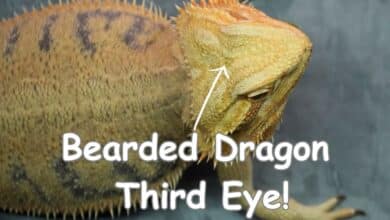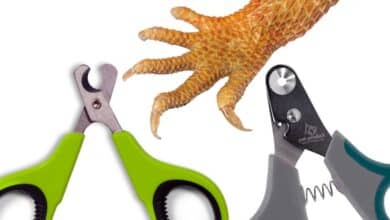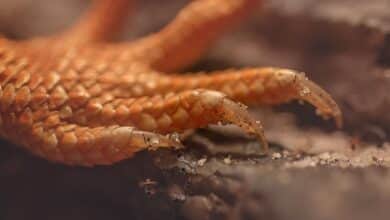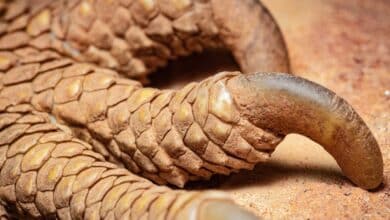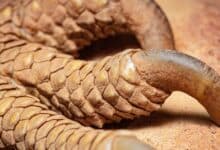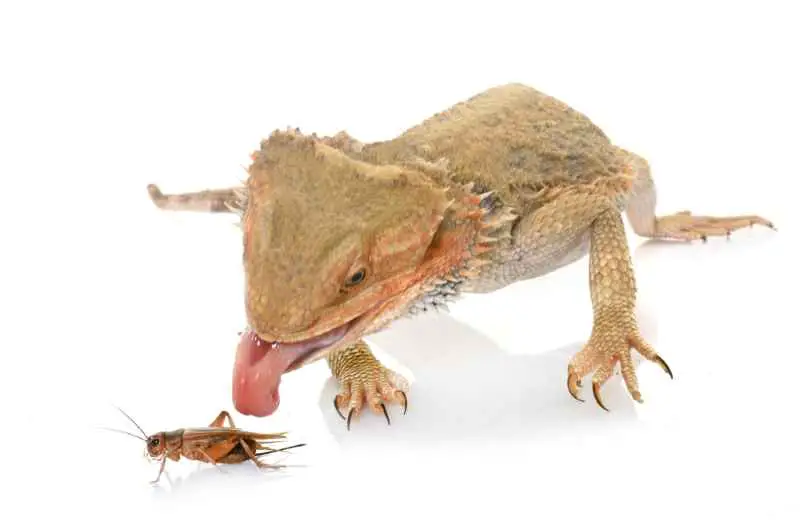Bearded Dragon Tongue Issues, Movement, and Color Meaning
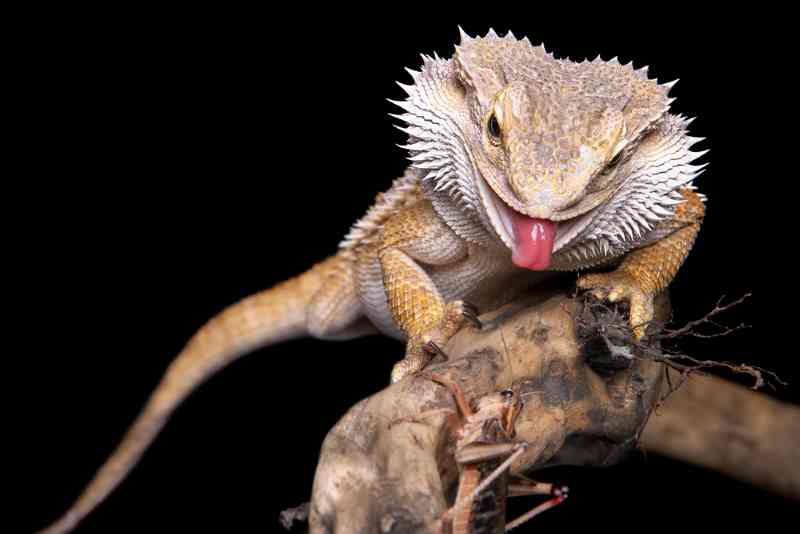
Many bearded dragon owners can become concerned when they find their bearded dragon’s tongue – or at least the tip of their tongue – has started to discolor.
While a white tip tongue can be completely normal for a bearded dragon, owners should pay a little more attention to their little lizard if the tip of the tongue ends up darkening or turning black or grey in color since, unfortunately, this can be an indication of illness or infection.
Continue reading to learn more about what a bearded dragon’s tongue is supposed to look like, whether a white or black tip is considered normal, why your bearded dragon may be sticking their tongue out, and more.
Contents
What Is a Bearded Dragons Tongue Supposed to Look Like?
The mouth and tongue of a healthy bearded dragon should appear bright light pinkish with a faint yellow tinge, free of ulcers, swellings, discoloration, or other anomalies. The inside of their necks are also generally the same hue or a soft pink tone.
Bearded dragons feed, taste, breathe, and regulate their body temperature with their mouths and tongues. As a result, they have a short sticky surface that guides their prey into their mouth. Their tongues should also spread outwardly but not much.
My Bearded Dragon Has a White Tip on Their Tongue
What Is a White Tip Tongue?
The tip of a bearded dragon’s tongue can range from pale pink to white. This tongue muscle can also be somewhat sticky to help the lizard catch prey swiftly. This is totally normal, and you should, therefore, not be concerned about it.
It’s not unusual if the tip of your bearded dragon’s tongue seems to be completely white. These sections of their tongues are lighter in color and have a gooey feel, which is a useful physical adaptation that allows these lizards to catch prey more readily and fast.
However, if your bearded dragon’s entire throat or tongue appears white, this is generally an early sign that he or she could be suffering from internal parasites or anemia.
Why Do White Tips on Breaded Dragon Tongues Occur?
When a bearded dragon’s tongue becomes white, it typically does not mean it is suffering from a major illness. During normal behaviors like shedding, napping, and being too heated, a bearded dragon’s tongue will turn white. However, a bearded dragon’s white tongue can also indicate that it is unwell, injured, or dying.
Observe your bearded dragon’s behavior and record any other indications or symptoms that could signal a more serious condition to figure out why his tongue is going white. If you observe any of these symptoms, consult your local reptile veterinarian as soon as possible.
Are White Tip Tongues Normal?
If the tip of your bearded dragon’s tongue seems to be totally white, that’s not unusual. Generally, a bearded dragon’s tongue is lighter in appearance and known to have a gooey texture in certain areas, which is a helpful physical adaptation that helps these lizards to grasp prey more quickly and effortlessly.
My Bearded Dragon Has a Black Tip on Their Tongue
What Is a Black Tip Tongue?
If the tip of your bearded dragon’s tongue looks to be turning black, this could be a sign of illness, such as mouth rot, or a sign of trauma. Unfortunately, these illnesses are particularly dangerous to snakes and lizards, like bearded dragons.
Mouth rot is a gum and mouth illness caused by tiny wounds and food lodged between your bearded dragon’s teeth. The illness can, unfortunately, kill your reptile if left unchecked.
How To Treat a Bearded Dragon with A Black Tip Tongue?
To begin treating your bearded dragon’s blackened tongue at you, you must first identify the infection. For example, if the infection is in its early stages and has scarcely impacted your pet, you can attempt home remedies before seeking veterinary help.
Trust your instincts here; if you’re confident that it’s not widespread, go proactive and grab the Q-tip. To reduce the strength of the solution, you will also need some Betadine or Nolvasan diluted in water. Then, carefully apply the treatment to the afflicted region using a cotton swab. Remove any debris and be careful to thoroughly rinse.
If the infection persists, veterinary intervention is still the best option.
My Bearded Dragon Has a Grey Tongue
Why Does My Bearded Dragon Have a Grey Tongue?
If the interior of your bearded dragon’s mouth appears totally white or grey, this can indicate the beginning of a serious health issue like anemia, mouth rot, a respiratory tract infection, parasites, or other health issues that have been linked to these symptoms.
As a result, if your beardie’s neck and tongue seem white or significantly pale, this might be a sign of a health condition, so pay attention and seek veterinarian help. After all, these signs and symptoms might indicate anemia, parasites, and perhaps even other health problems.
Why Is My Bearded Dragon Sticking His Tongue Out?
Regulating Body Temperature
Bearded dragons, like other lizards, are unable to sweat, which is how most creatures regulate their body temperature. As a result, a lizard’s body temperature must be regulated in different ways, and one of them is by opening its mouth. The motion is known as gaping in this case because it removes excess heat from the body, lowering the body temperature.
The most typical time for a beardie to gape is while they are basking, which usually means while they are perched on a rock beneath the heat lamp. If they’re gaping in other parts of the tank, you should look around to see if there are any cool locations where your dragon can instead relax.
Sensing Their Surroundings
Licking is also a means for bearded dragons in captivity to have a better understanding of their environment. The receptors in the tongue of bearded dragons are where they get their information.
For example, if there are a lot of new stimuli in their tank, or if you’ve moved the cage to a different room or location, your bearded dragon is most likely licking every surface. This assists them in gaining an understanding of the new place, if it is alone in it, and how it should function.
Metabolic Bone Disease (Rare)
MBD, or metabolic bone disease, is extremely common in bearded dragons and continues to be a serious hazard. For a beardie, it can be unpleasant and debilitating.
MBD in bearded dragons is harmful if not treated, and it can potentially kill a dragon. This disease is harmful because if the body is deficient in calcium, it will begin to take calcium from the bones. The bones then thin down and become brittle, which can lead to paralysis.
One of the symptoms of MBD is licking. If your bearded dragon starts sticking their tongue out unusually, observe them for other behaviors to see if there is a more serious underlying cause, like MBD, since this will necessitate veterinary intervention.
Licking
Bearded dragons lick everything they come into touch with, including the flowers, the floor, the tank edges, and even you. They do this to become familiar with their environment and determine whether or not there are any predators or threats ahead. To be cautious, some bearded dragons will also lick anything before approaching it.
Why Do Bearded Dragons Lick the Air?
Bearded dragons use their tongue to catch particles and gather information about their surroundings. When a bearded dragon licks the air, it is striving to taste and smell its environment more efficiently.
For example, if your bearded dragon has pooped in the tank, it will not enjoy the stink. In this case, you may notice your bearded dragon opening its lips and licking the ‘air,’ as if it is trying to get a better sniff of it.
This behavior will then be followed up by your bearded dragon scratching the glass and asking to be let out since the stench upsets it.
Final Thoughts
Many bearded dragon owners are concerned when their bearded dragon’s tongue, or at least the tip of their tongue, begins to discolor. While a white tip tongue is perfectly typical for a bearded dragon, owners should pay more attention to their lizard if the tip of the tongue darkens or turns black or grey in color, since this can be a symptom of disease or infection.
If you are unclear about what is causing your bearded dragon’s tongue to discolor, it is recommended to seek the counsel of your local reptile vet to avoid any potential diseases and keep your lizard in peak health.
